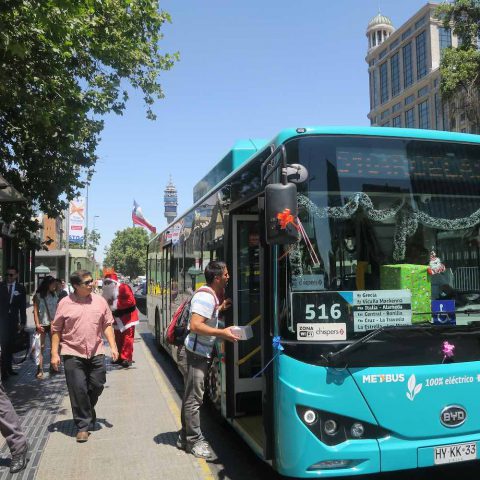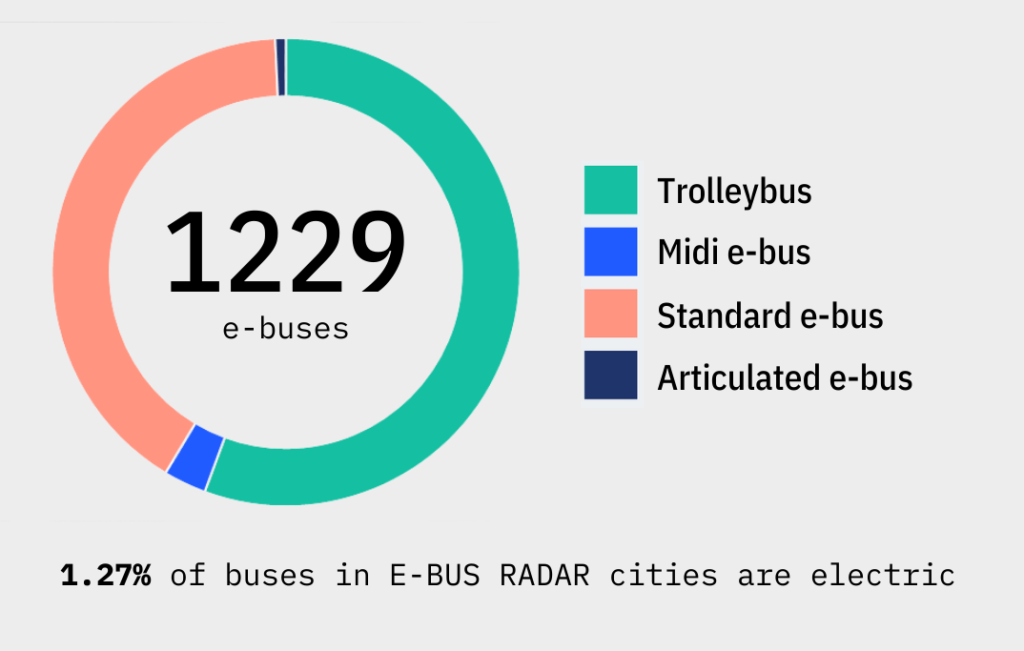An online platform launched to monitor e-bus deployment advancements in Latin America
27 Latin American cities and 1,229 electric buses in operation (413 of them are in Santiago de Chile), i.e. 1.27% of the total bus fleet in the considered cities. The Laboratório de Mobilidade Sustentável (LABMOB) has today launched the E-BUS RADAR platform in partnership with the ZEBRA project, which has the scope of support the adoption […]

27 Latin American cities and 1,229 electric buses in operation (413 of them are in Santiago de Chile), i.e. 1.27% of the total bus fleet in the considered cities. The Laboratório de Mobilidade Sustentável (LABMOB) has today launched the E-BUS RADAR platform in partnership with the ZEBRA project, which has the scope of support the adoption of electric buses in the region.
The website shows how many vehicles are deployed in each city, with a segmentation for category, the share of zero emission vehicles on the total fleet and the calculation of the CO2 savings per year.

E-BUS RADAR platform, zero emission buses in Latin America
The E-BUS RADAR platform has the goal to promote and monitor fleets of electric buses used in public transport systems of Latin American cities. Three specific targets are pursued: to monitor and georeference fleets of operating electric buses; to promote data transparency; to quantify annual CO2 emissions savings thanks to these vehicles.

LABMOB and ZEBRA behind the E-BUS RADAR
The E-BUS RADAR platform is the outcome of a collaborative work involving several institutions recognized for their work in the area of climate, transportation, and quality of life. The Laboratório de Mobilidade Sustentável (LABMOB), from the Federal University of Rio de Janeiro (UFRJ), is responsible for developing the platform, in partnership with the Zero Emission Bus Rapid-Deployment Accelerator (ZEBRA), co-led by C40 Cities (C40) and the International Council on Clean Transportation (ICCT). This project also counts on the collaboration of the Instituto de Energia e Meio Ambiente (IEMA) and the support of the Instituto Clima e Sociedade (iCS).
Updates every 6 months
The platform’s data is from April 2020 and will be updated every six months.
«Buses are the main means of urban mobility for millions of citizens in Latin America. However, these vehicles still primarily run on diesel, an outdated and highly polluting technology. The expansion of e-bus fleets in Latin American cities is key to the local and global future. This platform plays an important role in data transparency, monitoring and dissem- ination of e-buses» , the partners underline.
The platform supports local and national governments to achieve their climate goals by promoting e-buses as a solution to enable cleaner and healthier urban areas.







